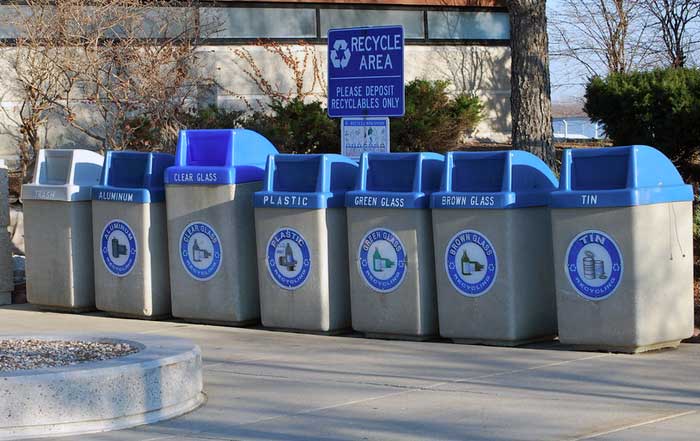The evolution of composting from a niche environmental practice to a cornerstone of sustainable waste management in 2025 reflects a dynamic interplay between innovative public policies, corporate responsibility, and grassroots community engagement. As societies worldwide seek to optimize resource efficiency and reduce environmental footprints, composting has emerged as a critical mechanism for transforming organic waste into nutrient-rich soil amendments. This transformation not only alleviates the pressure on overburdened landfills but also contributes to a circular economy where resources are continually reused and repurposed. The comprehensive approach to composting now embraced by municipalities, major corporations, and small-scale entrepreneurs alike underscores a broader commitment to environmental preservation and sustainable development.
The Growing Significance of Composting in 2025
Recent trends in waste management and resource conservation have positioned composting as a pivotal element of modern environmental strategy. Municipal governments and environmentally driven enterprises have increasingly recognized that reducing landfill dependency is paramount to mitigating harmful emissions and preserving natural resources. As urban populations swell and waste production accelerates, composting offers an elegant solution for diverting organic materials—such as food scraps, yard waste, and biodegradable paper products—from landfills and instead channeling them into productive uses. This shift in waste handling practices is supported by sophisticated public outreach programs, innovative collection systems, and state-of-the-art processing technologies that make composting both efficient and accessible.
Municipalities around the globe have restructured their waste management protocols by integrating curbside organics collection services, establishing community drop-off sites, and incentivizing both public and private sector participation in composting initiatives. In this context, composting has transcended its historical role as an isolated environmental practice to become a standard component of a modern, sustainable infrastructure. Organizations like You Save Our World have been at the forefront of advocating for and implementing these practices, ensuring that sustainable waste management is recognized not only as an environmental imperative but also as an economically viable strategy.
Municipal Leadership: Minneapolis’ Trailblazing Program
In the heartland of the United States, the city of Minneapolis has garnered significant attention for its comprehensive, city-wide composting program. Designed to mirror traditional waste collection services, the initiative has rapidly become an integral part of the urban landscape. Strategically placed, clearly marked bins have transformed residential neighborhoods into hubs of sustainable activity, with participation rates surpassing expectations and engaging over half of the city’s households. This program is a testament to how clear guidelines, accessible resources, and effective public communication can demystify the process of composting, encouraging even the most hesitant residents to join the environmental movement.
City officials have worked closely with specialized firms such as Specialized Environmental Technologies (SET) to refine and optimize the program. SET’s industrial-scale facilities are capable of processing vast quantities of organic matter, converting what was once regarded as waste into high-grade compost that is then used to enhance community gardens, support urban agriculture, and revitalize public green spaces. The success of Minneapolis’ initiative is underpinned by its commitment to reducing greenhouse gas emissions by diverting organic waste from anaerobic landfill conditions, where methane production can exacerbate climate change. For further insight into municipal strategies, interested readers may explore innovative solutions from organizations like the Environmental Protection Agency and learn more about sustainable waste management through dedicated resources on Learn more about sustainable business practices.
Corporate Stewardship: Google and Microsoft Leading the Way
Amid growing global pressures to integrate sustainable practices into everyday business operations, major technology companies have demonstrated that environmental responsibility and economic performance are not mutually exclusive. Google, for instance, has implemented extensive composting protocols across its campuses, aiming to achieve a zero-waste status through the strategic diversion of organic waste. By providing designated compost bins and disseminating comprehensive educational materials, Google has not only reduced its waste disposal costs but also reinforced a culture of environmental stewardship among its employees. This internal shift towards sustainability serves as an exemplar for other multinational corporations.
Similarly, Microsoft has embraced composting as a key component of its broader sustainability agenda. The company’s initiative incorporates regular training sessions, informative workshops, and engaging internal campaigns that emphasize the environmental benefits of composting. By aligning composting efforts with the company’s overall waste reduction strategy, Microsoft has successfully fostered a collaborative approach to environmental management, in which each employee contributes to the organization’s sustainable future. The corporate strategies implemented by these technology giants highlight the symbiosis between operational efficiency and ecological accountability. Additional corporate insights on sustainability can be found through platforms like Learn more about corporate environmental responsibility and detailed reports available on Microsoft Sustainability.
The Entrepreneurial Spirit: Innovation by Worm Bucket
As composting becomes a standard practice in diverse settings, entrepreneurial ventures are emerging to fill gaps in the market and offer innovative solutions tailored to modern lifestyles. One such success story is Worm Bucket, an inventive company founded by Audrey and Rob Wynkoop. Confronted with the challenges of urban living—where outdoor space is at a premium—the founders developed an indoor composting system based on vermicomposting techniques. This compact system employs specialized worms to expedite the decomposition process, transforming kitchen scraps into valuable nutrient-rich castings often hailed by gardening enthusiasts as “black gold.”
Worm Bucket’s approach has resonated particularly well with apartment dwellers and urban residents, who appreciate the convenience and odor-free operation of the system. By adapting traditional composting methods to suit modern, compact living environments, the company has demonstrated that sustainable practices can be both innovative and accessible. This entrepreneurial endeavor has not only contributed to the broader adoption of composting but has also inspired other startups to explore creative waste management solutions. For those interested in how small-scale innovations can drive significant change, additional details can be found on platforms like Learn more about small business sustainability and Explore innovative green solutions.
Grassroots Engagement: Fairfax County’s Farmers Market Collaboration
In many communities, grassroots initiatives play a crucial role in advancing environmental awareness and sustainable practices. Fairfax County offers a compelling example of how local efforts can yield significant environmental benefits. By integrating composting initiatives into the fabric of its popular farmers markets, the county has successfully mobilized residents to contribute to sustainable waste management. Participants are encouraged to bring their food scraps to designated compost drop-off points at market sites, a simple yet effective strategy that has resulted in the collection of over 120,000 pounds of organic waste within the program’s inaugural year.
The initiative in Fairfax County goes beyond mere collection; it is a vibrant community-building exercise that educates residents about the environmental and economic benefits of composting. Farmers, local government officials, and environmental advocates come together to provide practical demonstrations, share best practices, and foster a sense of shared responsibility for the environment. This collaborative model not only diverts substantial organic material from landfills but also cultivates an informed citizenry that values sustainable agriculture and healthy living. More community-oriented strategies for waste reduction are highlighted on Learn more about community recycling initiatives and other related articles on You Save Our World.
Integrating Advanced Technologies: The Future of Composting
Technological advancements are rapidly reshaping the landscape of composting, enabling faster, more efficient processing of organic waste. Cutting-edge systems now incorporate automated controls, sensor-based monitoring, and specialized microbial additives that accelerate the decomposition process while ensuring high-quality compost output. These technologies are particularly beneficial for municipalities and large institutions that must process significant volumes of organic material within limited timeframes.
One promising development is the integration of composting with anaerobic digestion systems. Although composting typically relies on oxygen to facilitate the breakdown of organic matter, coupling it with anaerobic digestion—which operates in oxygen-free environments—allows facilities to generate renewable biogas in addition to nutrient-rich compost. Pilot projects in several cities are already testing this hybrid model, which not only maximizes resource recovery but also contributes to local renewable energy initiatives. As these technologies mature, the combination of composting and anaerobic digestion is expected to become a cornerstone of modern waste management, delivering both environmental and economic benefits. For further technical details on these innovations, readers can refer to research available on Learn more about advanced composting technology and insights from Renewable Energy Innovations.
Quality control is another critical facet where technology is making significant inroads. Automated sorting systems and digital monitoring tools are being deployed to ensure that contaminants such as plastics and heavy metals are effectively removed from organic waste streams. This rigorous approach not only improves the nutrient profile of the finished compost but also enhances public confidence in the process. As municipalities continue to invest in these technological solutions, the environmental benefits of composting will only grow stronger, establishing it as a reliable component of sustainable waste management. Additional insights into technology-driven environmental solutions can be found at Learn more about innovative waste management and related technology reports.
Educational Initiatives: Cultivating Environmental Awareness
Despite the clear benefits of composting, widespread adoption has been hampered by a lack of understanding and persistent misconceptions about the process. To address these challenges, a diverse array of educational initiatives has been launched by governmental agencies, community organizations, and academic institutions. These campaigns are designed to inform the public about the practical aspects of composting while emphasizing its critical role in environmental stewardship.
Workshops, online tutorials, and interactive community events have proven to be particularly effective in demystifying composting. Educational programs are often integrated into school curricula and community centers, where participants learn not only about the science of decomposition but also about the broader implications for soil health and resource conservation. By providing hands-on experiences and practical guidance, these initiatives help transform composting from an abstract concept into a tangible, everyday practice. For more educational resources on sustainable living and composting, readers are encouraged to visit Environmental Awareness and explore related content such as Sustainability Education for a Prosperous Planet.
Furthermore, many municipalities have embraced digital platforms to support these educational efforts. Mobile applications and online portals now offer real-time information on collection schedules, guidelines for proper waste segregation, and troubleshooting tips for managing composting systems at home. These digital tools foster a continuous learning environment, ensuring that participants remain engaged and informed about best practices in waste management. For more insights into effective educational strategies, additional information is available on Embracing Unplugged Learning for a Sustainable Future.
Policy and Regulatory Support: The Backbone of Sustainable Composting
The acceleration of composting initiatives across both public and private sectors is closely linked to supportive policies and regulatory frameworks. Recognizing that voluntary participation alone may not be sufficient to address the environmental challenges posed by organic waste, governments have increasingly introduced mandates and incentives to promote composting. These policies require large waste generators—such as commercial establishments, schools, and apartment complexes—to separate and divert organic waste, thereby reinforcing the transition toward zero-waste objectives.
Financial incentives, including grants, tax breaks, and low-interest loans, have also played a pivotal role in encouraging the adoption of composting technologies. Local governments and environmental agencies frequently partner with private firms and nonprofit organizations to provide technical support and training, ensuring that stakeholders have the resources necessary to implement effective composting programs. Such collaborative efforts serve as a model for integrated waste management, aligning public policy with market-driven solutions. For further policy insights, readers may explore Climate Change and Effective Dispute Resolution: A Pathway to Sustainable Living in 2025 and Beyond.
The establishment of clear guidelines and standards for compost quality is equally critical. Regulatory frameworks often stipulate strict criteria for the composition and purity of compost, thereby safeguarding its agricultural efficacy and ensuring public confidence in recycled organic products. These standards are supported by ongoing research and monitoring efforts, which continue to refine best practices in waste management. As policy and technological advancements converge, the regulatory landscape for composting is expected to become even more robust, paving the way for broader and more effective implementation of sustainable waste practices.
Overcoming Challenges: Infrastructure, Perception, and Logistics
Notwithstanding the significant progress made in the field of composting, several challenges continue to impede its universal adoption. Infrastructure limitations remain a primary concern in many regions, particularly where existing waste management facilities are ill-equipped to handle the volume of organic material diverted from landfills. The lack of adequate processing centers, combined with inefficient collection logistics, can lead to operational bottlenecks that undermine the overall efficacy of composting programs.
Public perception also plays a critical role in determining the success of composting initiatives. Misconceptions regarding the potential for odors, pest infestations, and the perceived complexity of maintaining a compost system persist in some communities. These concerns can deter participation, even among residents who are otherwise committed to sustainable living. Addressing these issues requires a multifaceted approach that includes educational campaigns, demonstration projects, and the development of user-friendly composting tools designed to minimize inconvenience. For practical solutions and further discussion on waste reduction, interested parties may consult Minimizing Waste in Everyday Life: Strategies for a Sustainable Future.
Logistical challenges, such as the provision of appropriately sized compost bins and reliable collection services, further complicate matters, particularly in densely populated urban areas. Municipalities and private operators are actively exploring innovative solutions to overcome these obstacles, including the use of smaller, modular composting units and optimized collection schedules that reduce storage times and mitigate potential issues. These practical measures, while sometimes appearing mundane, are essential to the successful scaling of composting programs and the realization of their full environmental benefits.
Building Bridges Across Sectors: Collaboration and Partnerships
The most successful composting initiatives are those that harness the collective expertise and resources of multiple stakeholders. In many instances, collaborative models that bring together public agencies, private enterprises, nonprofit organizations, and community groups have proven to be particularly effective in driving innovation and expanding participation. For example, the partnership between Minneapolis city officials and Specialized Environmental Technologies exemplifies how integrated approaches can streamline operations and enhance the overall impact of a municipal composting program.
These cross-sector alliances facilitate the sharing of knowledge, technology, and funding, enabling more efficient and cost-effective waste management strategies. Schools, community organizations, and local businesses contribute valuable insights into the unique needs of their regions, ensuring that composting solutions are tailored to the specific challenges and opportunities at hand. This collaborative spirit not only fosters innovation but also builds a sense of shared ownership, making sustainability a collective priority. To learn more about collaborative environmental initiatives, readers can visit Global Call to Rethink Waste: Emerging Initiatives and the Future of Sustainability and related features on You Save Our World.
In addition to technical collaboration, the role of community engagement in sustaining long-term composting programs cannot be overstated. Grassroots efforts that empower local residents to take charge of their waste management not only yield immediate environmental benefits but also serve as a catalyst for broader cultural change. For instance, community-driven projects in Fairfax County have successfully mobilized residents to contribute to large-scale compost collection, demonstrating that when people feel invested in the process, the benefits extend well beyond the reduction of landfill waste.
Economic Benefits: Job Creation and Cost Savings
Beyond its environmental merits, composting offers significant economic advantages that resonate with both public authorities and private enterprises. The reduction in waste disposal fees is one of the most immediate financial benefits observed by municipalities that implement robust composting programs. Lowering the volume of waste directed to landfills reduces the overall cost burden on local governments, allowing savings to be reinvested into other vital public services. These cost savings also provide a strong economic rationale for expanding composting initiatives, particularly in times of fiscal constraint.
On the corporate side, businesses that adopt composting practices often experience a positive return on investment. Restaurants, grocery stores, and other commercial establishments that generate large volumes of organic waste have noted substantial reductions in hauling and disposal expenses. Some forward-thinking companies have even transformed their composting operations into revenue-generating ventures, marketing high-quality compost to local farmers, garden centers, and landscaping firms. The economic case for composting is further reinforced by the creation of new jobs in waste processing, equipment manufacturing, and distribution networks. For additional insights into the financial advantages of sustainability, readers may explore Fostering Financial Literacy and Advancing Sustainable Investing in 2025 and Recycling as a Cornerstone of Resource Management in 2025.
The local economic impact of composting extends into the broader community as well. When composting practices improve soil fertility and support local agriculture, the resulting increase in crop yields and quality can bolster regional food security and stimulate economic growth. Urban agriculture initiatives, community gardens, and local farmers markets benefit from the availability of nutrient-rich compost, which enhances soil structure and reduces the need for chemical fertilizers. This virtuous cycle of environmental and economic benefits reinforces the integral role of composting in the development of resilient, sustainable communities.
Enhancing Soil Health and Community Well-Being
At its core, composting is about returning organic matter to the soil, thereby rejuvenating degraded land and fostering a healthier ecosystem. The process of transforming waste into valuable soil amendments has profound implications for agriculture and land management. Nutrient-rich compost not only improves soil texture and water retention but also stimulates beneficial microbial activity that is essential for plant growth. This natural process is crucial for regions where soil fertility has been compromised by intensive farming practices or urban expansion.
Improved soil health has a cascading effect on the broader environment and community well-being. Urban green spaces, community gardens, and public parks that receive regular applications of compost often exhibit enhanced biodiversity and increased resilience to drought and erosion. The revitalization of these areas contributes to improved air quality, reduced urban heat island effects, and the creation of healthier living environments. Moreover, healthier soils serve as important carbon sinks, playing a role in mitigating climate change by sequestering carbon dioxide from the atmosphere. For further reading on soil conservation and sustainable agriculture, visitors may explore The Enduring Promise of Sustainable Agriculture and The Value of Tree Planting for Environmental and Human Prosperity.
Local governments and community organizations have recognized the symbiotic relationship between healthy soils and community vitality. Initiatives that integrate composting into urban planning—such as the development of community gardens and urban farms—have fostered a sense of communal pride and ownership. These projects not only transform vacant or underutilized urban spaces into productive, green areas but also provide educational opportunities that reinforce sustainable practices. For more examples of community-driven environmental projects, interested readers can visit Local Food Sourcing: A Cornerstone of Sustainable Living.
The Digital Transformation of Composting
In an era where digital connectivity permeates every aspect of daily life, the transformation of composting practices through technology has been both profound and far-reaching. Digital platforms have become essential tools in educating, engaging, and empowering communities to participate in sustainable waste management. Social media channels, mobile applications, and online portals now offer real-time information on collection schedules, proper waste segregation, and even provide data analytics on the environmental impact of composting programs.
Municipalities and private enterprises alike have leveraged these digital tools to foster a sense of collective achievement and accountability. For example, dedicated apps that track composting performance use gamification techniques to reward consistent participation, turning environmental responsibility into an engaging and interactive experience. These digital innovations also facilitate transparent communication between waste management providers and the public, ensuring that all stakeholders have access to accurate, up-to-date information. For additional insights into the intersection of digital technology and environmental management, readers are encouraged to review articles on Embracing Sustainable Living and Optimizing Time Management in 2025 and The Ever-Evolving Craft of Effective Communication.
Corporate sustainability campaigns have also found a powerful ally in digital media, as companies showcase behind-the-scenes glimpses of their composting operations, share success stories, and communicate the tangible benefits of waste reduction. This transparency not only builds trust with environmentally conscious consumers but also sets a benchmark for accountability within the industry. For more on how digital platforms are shaping modern sustainability practices, visitors can refer to external resources such as the United Nations Environment Programme and Sustainable Business.
Responding to Climate Challenges Through Composting
The integration of composting into broader climate action strategies has gained significant momentum in recent years. As communities and businesses confront the multifaceted challenges of climate change, composting offers an immediate and pragmatic tool to reduce greenhouse gas emissions. Landfills, notorious for their methane emissions, are gradually being supplanted by composting initiatives that promote aerobic decomposition—a process that significantly curtails the production of potent greenhouse gases. This shift not only contributes to improved air quality but also bolsters global efforts to mitigate the impacts of climate change.
In addition to reducing emissions from landfills, composting enhances the ability of soils to sequester carbon. Nutrient-rich compost stimulates the growth of vegetation, which in turn absorbs carbon dioxide from the atmosphere. Urban areas that incorporate green infrastructure—such as community gardens, green roofs, and urban farms—benefit from this dual approach, addressing both waste management and carbon sequestration simultaneously. For those interested in the interplay between composting and climate policy, further reading can be found on Reducing Carbon Footprints: A Guide to Sustainable Living in 2025 and Global Imperative of Cleaner Air: Examination of Causes, Effects, and Strategies.
International organizations, research institutions, and governments are increasingly recognizing the economic potential of incorporating composting into carbon credit markets. By quantifying the emissions avoided through proper organic waste management, composting projects may soon qualify for carbon credits, creating additional revenue streams that further incentivize large-scale adoption. Although the frameworks for these mechanisms are still in development, the potential for composting to contribute to both environmental and economic goals is unmistakable.
Cultivating the Next Generation of Composting Advocates
One of the most promising aspects of the modern composting movement is the enthusiastic participation of younger generations. In schools and community centers, composting has become a hands-on educational tool that introduces students to the principles of ecology, sustainability, and resource conservation. By engaging in practical activities—such as maintaining school gardens or participating in local recycling programs—young people develop a deep, personal connection to the environment and gain an appreciation for the role that composting plays in nurturing it.
Social media and digital platforms have further amplified the voices of young environmental advocates, who use these channels to share innovative ideas, practical tips, and success stories related to composting. Influencers and community leaders alike are harnessing the power of digital communication to create a more informed and engaged citizenry. This vibrant exchange of ideas not only accelerates the adoption of composting practices but also fosters a culture of sustainability that is likely to endure for generations to come. For more insights on the role of youth in sustainability, readers may visit Soaring Global Temperatures in 2024: A Climate Wake-Up Call and The Power of Sustainable Gardening.
Moreover, many forward-thinking companies have begun to incorporate environmental stewardship into their recruitment and talent development strategies, with a keen focus on attracting younger professionals who are passionate about sustainability. By fostering a work culture that values environmental responsibility, these organizations not only contribute to broader societal goals but also enhance their own competitive advantage. Additional examples of youth-led environmental initiatives can be found on Rising Tide of Sustainable Consumerism: Navigating the Future of Eco-Friendly Choices.
Tailoring Composting Solutions to Urban and Rural Contexts
The diversity of geographic and demographic contexts across which composting is implemented necessitates tailored approaches that accommodate local conditions. In densely populated urban centers, space constraints and high-rise living pose unique challenges that demand innovative solutions. Many urban communities have responded by adopting decentralized composting models, including compact in-home systems and rooftop composting initiatives that capitalize on limited outdoor spaces. These solutions allow urban residents to contribute to waste diversion without requiring extensive infrastructure modifications.
Conversely, rural and agricultural areas benefit from large-scale composting operations that integrate seamlessly with traditional farming practices. In these settings, the availability of open land allows for the establishment of expansive windrows or static pile composting systems that can process significant volumes of organic matter. The resulting compost not only improves soil fertility and crop yields but also supports broader initiatives aimed at reducing reliance on synthetic fertilizers. For readers interested in region-specific strategies, additional case studies and insights are available at Local Food Sourcing: A Cornerstone of Sustainable Living and Energy Conservation and Home Electricity Generation: Shaping a Sustainable Future.
Policy makers have also recognized the importance of flexibility in designing composting programs. While overarching guidelines on best practices remain essential, allowing local authorities the autonomy to adapt these guidelines to meet the specific needs of their communities is critical. This approach not only ensures the practical relevance of composting initiatives but also empowers residents to take ownership of their local environmental outcomes. For further discussion on the regional adaptability of sustainable practices, readers are encouraged to explore Global Imperative of Resource Preservation and Embracing Organic Agriculture: A Pillar for Sustainable Living in 2025.
Future Outlook: Ongoing Innovation and Collaboration
The trajectory of composting in 2025 is characterized by continuous evolution, driven by technological innovation, progressive policy frameworks, and a growing societal commitment to sustainability. Research into enhancing microbial efficacy, optimizing decomposition rates, and refining nutrient profiles is ongoing, supported by both public institutions and private enterprises. As new composting technologies emerge, their integration with digital platforms and renewable energy systems promises to further transform waste management practices.
Collaborative efforts between academic institutions, environmental agencies, and private companies are fostering an environment of shared learning and innovation. Pilot projects that combine composting with anaerobic digestion, for example, are already demonstrating the potential to generate renewable energy while producing high-quality soil amendments. These multidisciplinary partnerships serve as a testament to the far-reaching implications of composting, positioning it as a key element in global efforts to address waste management, climate change, and resource scarcity simultaneously. For the latest insights into cutting-edge waste management technologies, readers may explore The Urgent Need for Alternative Energy in 2025 and Evolving Landscape of Sustainable Business Innovations Driving Environmental Progress.
The continued success of composting initiatives will depend on the sustained collaboration between public and private sectors. As stakeholders share data, refine best practices, and scale successful models, composting is poised to evolve from a voluntary practice into an institutionalized element of comprehensive waste management systems. For those who wish to remain at the forefront of these developments, additional resources and detailed analyses are available on The Evolving Landscape of Global Business in 2025.
Charting a Sustainable Future: The Road Ahead
As the global community grapples with the twin imperatives of environmental preservation and economic resilience, composting stands out as a practice that offers tangible benefits on multiple fronts. From enhancing soil health and reducing greenhouse gas emissions to stimulating local economies and fostering community engagement, the advantages of composting are as diverse as they are significant. Municipalities like Minneapolis, major corporations such as Google and Microsoft, and entrepreneurial ventures like Worm Bucket illustrate that composting is not merely an environmental fad but a transformative force reshaping waste management practices.
Looking forward, the integration of advanced technologies, robust policy frameworks, and innovative educational initiatives is expected to further solidify the role of composting in sustainable development. The movement is characterized by an inherent adaptability that enables it to respond to the evolving challenges of urbanization, resource depletion, and climate change. As communities continue to experiment with new models and collaborate across sectors, composting will undoubtedly emerge as a linchpin in the global effort to create a more sustainable and resilient future.
In this transformative journey, every stakeholder—from local residents and small businesses to global corporations and government agencies—has a role to play. The collective commitment to composting underscores a broader recognition that environmental stewardship is not the purview of a select few but a shared responsibility that unites diverse communities under the banner of sustainability. For more inspiration and practical guidance on sustainable living, readers can visit Sustainable Living and Sustainable Business.
The future of composting is one marked by continuous innovation and evolving collaboration, a future in which waste is reimagined as a valuable resource rather than a disposable byproduct. By embracing this vision, communities around the world are charting a course toward a more sustainable, resilient, and prosperous planet.
Conclusion
In 2025, composting has firmly established itself as a pillar of sustainable waste management, bridging the gap between environmental necessity and economic opportunity. The practice’s rapid evolution—from municipal programs in cities like Minneapolis to pioneering efforts by multinational corporations and innovative small businesses—illustrates a transformative shift in how organic waste is perceived and managed. This evolution is underpinned by advanced technologies, supportive policies, and extensive educational initiatives that collectively promote environmental preservation and resource efficiency.
The success of composting programs lies in their ability to engage a broad spectrum of stakeholders through collaboration, technological innovation, and community empowerment. Whether it is the seamless integration of composting with renewable energy production, the creation of nutrient-rich soil amendments that revitalize urban green spaces, or the economic benefits realized through job creation and cost savings, the positive impact of composting resonates across multiple dimensions.
As the global community continues to navigate the challenges of urbanization, climate change, and resource scarcity, composting emerges as a beacon of hope and a practical solution that unites environmental responsibility with economic pragmatism. With the ongoing commitment of municipalities, corporations, and communities alike, the transformative power of composting is set to expand, reinforcing its status as an indispensable element of sustainable living.
For further reading and insights into related sustainability topics, readers are invited to explore additional resources on You Save Our World such as Achieving a Pristine Home and Protecting the Planet, Battling the Tide: Combating Plastic Pollution in the World’s Oceans, and Transforming Your Home into an Eco-Friendly Haven.
The journey toward a more sustainable future is ongoing, and composting represents a critical step in that journey—a tangible demonstration of how thoughtful waste management can lead to healthier soils, thriving communities, and a resilient environment. By embracing the innovative spirit and collaborative ethos that define the current landscape of composting, society is not only reducing its environmental impact but also sowing the seeds for a greener, more prosperous future.
For more in-depth discussions and updates on sustainable waste management practices, visit About You Save Our World, review Environmental Awareness, or reach out through Contact Us. Through continued dedication and creative problem-solving, the global community can ensure that composting remains a powerful instrument in the collective effort to preserve our planet for future generations.
This comprehensive exploration of composting in 2025 demonstrates that what was once considered a niche activity has grown into a vital pillar of sustainable waste management. By bridging technology, policy, education, and community action, composting not only addresses pressing environmental challenges but also cultivates a resilient and prosperous future. As innovative strategies continue to emerge and collaboration deepens, the promise of composting as a transformative environmental force is clearer than ever, charting a path toward a cleaner, more sustainable world.








